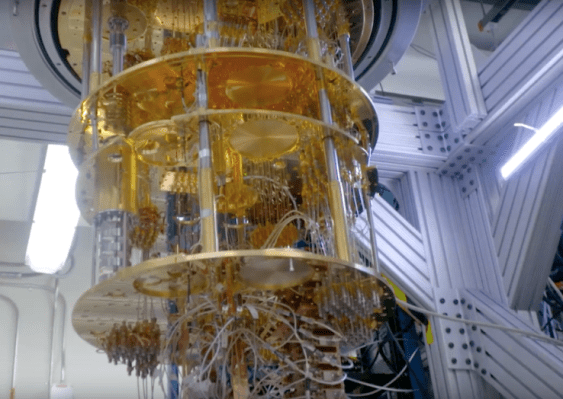IBM announced today that it was updating its Quantum Experience cloud with a new API that it hopes will increase the abilities of researchers and other interested parties to build more sophisticated applications with its experimental quantum computing system.
Last May, IBM opened up its 5 qubit computer in its NY state labs to the public in the form of a cloud service. The hope was that by providing interested parties with a working quantum computing model, it would help advance the technology, which remains very much in the preliminary stage of development.
At the time, the company released a simple programming language to write programs for the system that worked in a similar fashion to writing musical notes on a staff. Jerry Chow, manager of the experimental quantum computing group at IBM says that has worked extremely well to this point with 40,000 users signing up, generating 200,000 executions on the system’s processors and resulting in 15 externally generated research papers.
But participants have longed to interact with the system in more advanced ways, which led to the release of the API today on the IBM cloud platform. Having an API will help programmers who want to write scripts in their programming language of choice to deliver batches of experiments, rather than using the simple interactive language that IBM released last May. What’s more, according to IBM, it gives users the ability to build connections between IBM’s cloud-based quantum computer and more traditional computers without needing an extensive background in quantum physics to do it.
The idea is to provide the basis for higher end experimentation. “The API allows programmers to test more theories and lay the groundwork to scale up these larger systems. What we really want to do is work with the community to figure out what quantum computing looks like in the future when we have a larger number of qubits,” Chow explained.
The company also announced that it’s offering a computer simulator for what a 20 qubit quantum computer could look like, and plans to release a Software Development Kit (SDK) to allow researchers to begin building simple quantum applications for this system.
Although we are years away from exploiting the full abilities of quantum computing, all of this is designed to advance the field to get to a point some time in the future when we have a 50-100 qubit system. Chow says this is believed to be the holy grail of quantum computing when we can really begin to take advantage of its power.
Quantum computers, unlike traditional computers, don’t work on a simple on or off switch. Instead qubits can be in multiple states of on/off or some combination. This could open up ways to solve problems that aren’t solvable with today’s computers, Chow explained.
As I wrote in May in the Quantum Experience launch story, there are many rivers to cross with this technology and there are vast obstacles ahead due to the nature of this type of computing:
Among the challenges here are that quantum computers take enormous cooling systems that in some cases are colder than outer space (we’re talking seriously cold). What’s more, they maintain so much information, none of which is necessarily static; keeping all of that information available long enough for meaningful analysis is an enormous task.
By offering free access to this type of cutting-edge computing, IBM is hoping to advance the field with the belief that everyone will benefit if that happens. Other companies working on quantum computing including Google, Microsoft, Intel and startups like D-Wave Systems.
